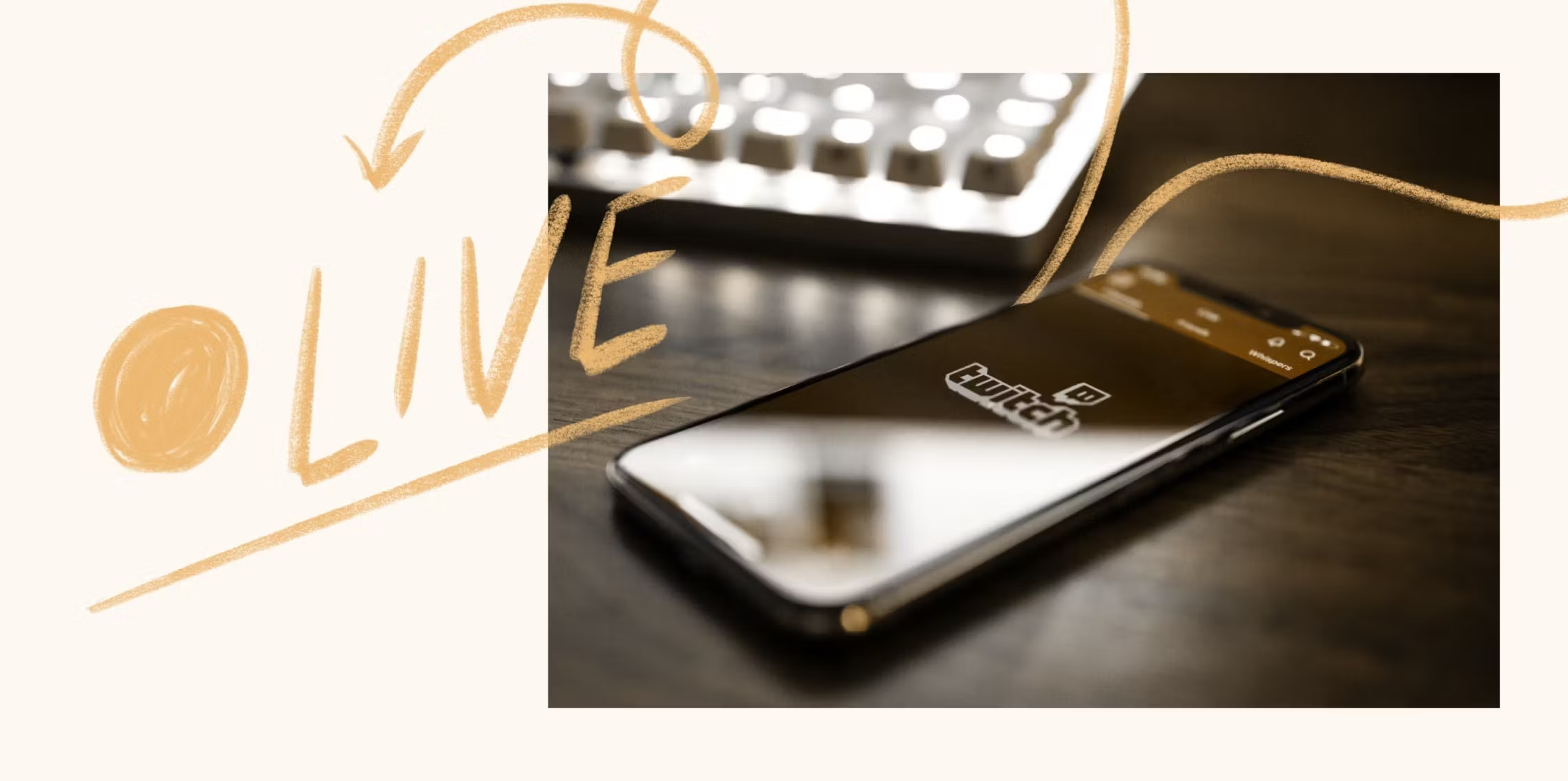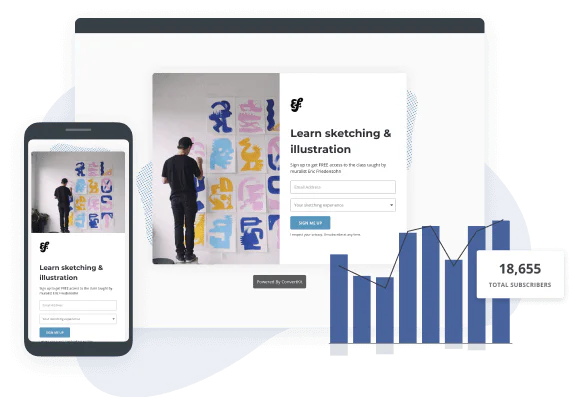In this Article
Nowadays, live streaming platforms abound.
But once upon a time, there was only one, and that was Twitch. Launched in 2011 as a platform for gamers to stream their games live for other people to watch in real-time, Twitch has gradually expanded its reach since then. While gaming is still their main focus, creator communities centered around art, music, and talk-based shows have developed as well.
Today we’re looking at an article from Wired titled Twitch Turns 10, and the Creator Economy Is in Its Debt and digging into topics from what constitutes the label of creator in the first place to the good and the bad of live-stream-based entertainment and why we might owe Twitch for much of our modern creator culture.
The modern creator economy: fans supporting creators
We owe Twitch the authenticity that it brought to the creator economy.
– Haley Janicek
For those who aren’t familiar with Twitch, it’s a subscription-based live-streaming platform where people pay a monthly fee to watch creators live-stream content, whatever that content may be. That fee is split down the middle between Twitch and the creators themselves which is a rather high cut for Twitch. Regardless, the more subscribers, the more money both the creators and Twitch make.
This creator culture business model is based on fans deciding they want to support a creator they are watching. And while slightly oversimplified, this relevant distillation of the creator economy in Wired’s article: “subscribing to people doing things.” It’s not wrong.
Kit’s Brand Director Charli Prangley is also a Twitch live-streamer, but rather than games, she live-streams her design work and website-building. Recently she became a Twitch affiliate, meaning she amassed enough hours of live-streaming so that people can now subscribe (meaning pay) to watch her channel if they want to.
As a creator, streaming my design work has given people in my audience more of an inside look into my process. It’s not a curated or edited video, they’re literally seeing it happen, including all the mistakes.
– Charli Prangley
Twitch: the name of the gamers
Those who are not gamers might wonder why people enjoy watching others play video games that they aren’t even playing. Charli explained that people who enjoy watching gamers are interested in witnessing their reactions, commentary, and choices throughout the game. Fans become invested in the personality of the person playing the game and the entertainment of watching them play the game in real-time.
An important thing to note is that many of these Twitch live-streamers have massive audiences. They don’t just live-stream their games, they also interact with their fans directly via chats and video live-streams, furthering their connection.
Streamers have hugely passionate audiences because of the live component of the content they create, more so than the influencer on Instagram who’s posting very curated photos of their space or outfit. People like the reality of seeing someone live and their live reactions.
Are gamers creators?
So are gamers creators? Are they part of the creator economy?
Absolutely.
A gamer who streams themselves playing a game is a creator, a gamer who plays by themselves is not. The streamer is making content for an audience to enjoy. It’s not all that different from making a video and uploading it to YouTube. It’s just that you’re watching it at the same time the video is being made if that makes sense.
But if the end goal is to have an audience, what if someone is just drawing in their room and not going to put it up for anyone to see. Is that person still an artist and a creator? In other words, is the only requirement to be a creator to have an audience? These are questions that have varying answers depending on who you ask.
Possibly, the word ‘creator’ doesn’t even work as a descriptor for the confluence of what might be an ‘artist’, ‘influencer’, and ‘celebrity’ all at once. A ‘creator’ isn’t an inclusive enough word for what all these things are.
Obviously, there are some differentiating opinions on what being a creator means, particularly in our modern, technology-driven world where consumers become celebrities by creating content about what they consume in real-time (so meta). Likely, the way we understand the role of a creator will evolve with the creator economy.
Live-stream sustainability
The sustainability of live streaming is questionable when it comes to the health of the creator.
While live-streaming can be a lucrative business once you’ve amassed an audience, it can also be a fickle and unstable one. Ninja, a Twitch creator mentioned in the Wired piece, described the burnout, relaying how he’d figured out how many subscribers (money) he lost every hour he wasn’t live-streaming. He considered his six-day honeymoon, sans live-stream, to be a huge risk.
The pressure to keep going must be so high and it’s all about momentum. If you think about the psychology of losing money every moment you’re not doing something, that’s incentivizing you to constantly be doing that thing. You’re going to get burnt out.
There’s now so much content out there that even wildly successful creators worry about losing momentum and their audience to the next best thing. The demand for instant gratification is insatiable and once you cross into celebrity territory, the product isn’t just what you’re creating anymore, it’s you.
Accessibility vs competition
The imbalance between the number of streams happening and the number of people wanting to watch streams is striking. The sheer amount of content made by people in the hopes of gaining an audience is huge, and it makes you wonder whether it was easier to become someone 20 years ago. Back then there wasn’t the accessibility or the visibility of the internet, but there was also a lot less competition.
The supply and demand of live streaming are inherently aspirational. You’re streaming to no one because one day you want to be the person streaming to a million.
Authentic entertainment: the core of the creator economy
Did Twitch bestow the demand for the kind of authenticity we now see in all corners of the internet? Think TikTok, YouTube, Facebook, and Instagram. Each of these platforms has added a live-stream component that creators use specifically to cultivate an authentic persona for themselves.
With Twitch being the first platform to fully invest in the power of live-streaming, it’s hard to deny that they must have had some role in creating our authenticity-based creator culture.
I do think that Twitch being the biggest proponent of live-streaming has had an impact on the expectation of authenticity that a fan has of a creator. You’re following them instead of a celebrity because they feel like a real person and you want that authenticity behind them.
– Charli Prangley
This is not to say that all creators are building a false sense of authenticity and connection with their audiences, it’s just to acknowledge that authenticity is now a marketable selling point. That’s what the monetization of live-streaming has taught us.
Live-streaming is here to stay
Charli’s advice to creators of all kinds: try live-streaming. “I resisted live for a long time because it’s scary, but it truly is a way to build a closer bond with your audience.”
At the end of the day, the monetization of live streaming is here to stay, at least for the foreseeable future, and we probably owe a lot of that to Twitch.
In the online era (not to mention the pandemic one) where so many things have been de-personalized, it’s no wonder that people are drawn to the things the internet can make personable again. That might mean watching someone live-stream themselves playing a video game on Twitch, scrolling through TikTok streams of people studying in real-time, or tuning in to a live q&a on Instagram.
The bottom line is that people crave relatability, and live-streaming is a way to make that happen.





